 Introduction
Introduction
On
New Year's Day, I shared my intention to focus 2021 on magic systems in Fantasy
– and wherever possible, to do so by talking with a fellow author about the
magic systems in their work.
Today,
as heralded then, I'm delighted to welcome AK Wilder to discuss the magic
systems in Amassia, the world of Crown of Bones, the first in her
exciting new Fantasy series that's released today!
Welcoming AK Wilder: In Conversation On Magic Systems In Crown Of Bones (Amassia #1)
HL: Congratulations, Kim, on the publication of Crown Of Bones. After the ups and downs of 2020, releasing a new book and series must feel like the best way of seeing in the new year!
AKW: Hi Helen! Thank you! Yes, releasing the first in this series is like starting the New Year on a high note. I feel like we have all had so much to face in the last twelve months and finding positive, creative things to focus on is the antidote. Hopefully, reading Crown of Bones will bring its own delight to the new year as well.
 |
| And it's here! |
AKW: You are right. These two concepts are cornerstones in the story world, really what all else is built on. “Throwing the bones” is a phrase used by all the peoples of Amassia, but only a select few, the black-robe Bone Throwers, learn this art of divination and utilise it. And these bones they throw are no ordinary charms. Every piece is carved into a whistle and etched with one of the 108 steps to An’awntia, the highest state a person can reach along the Path – the way to their perfected state of being. When played, they make up the song or story in the cast, revealing the message therein.
Bone throwing is based on an ancient art of divination and the ‘magic’ comes from the black-robe's “phantom” – in their case, a translucent, formless part of themselves that moves along the corridors of time, forward and back. These Bone Thrower are oracles with a huge responsibility as they determine the fate of every child on Amassia, deeming them savant (able to raise a phantom), non-savant (unable to raise a phantom), or marred (damaged and sacrificed to the sea).
Most of the population is non-savant but those the Bone Throwers mark as having potential are taken into the Sanctuary as eight-year-olds to trial. Their hope is they can raise their phantom and join the ranks of savants who serve the realm as healers, warriors, teachers and scribes. The ‘magic’ in their abilities is woven into their souls, developed over many lifetimes and predicted by the throw of the bones. With the right training, the young savant can touch a knee to the ground, allowing their phantom to drop out of their consciousness and gain form as it passes through the earth and erupts fully formed. Most phantoms take a solid form, and can appear as almost anything – human-like, animal-like, or even combinations of animals and vegetation. The black-robes, with their formless phantoms, are the only exception.
.
HL: What
are the aspects of the magic system in your new world of Amassia that are most
distinctive? Are there any particular influences from our world that shape the
magic?
AKW: The
most distinctive aspects would be the phantoms. They are inspired in part by
Jungian psychology and the notion that we all have a shadowed side, an unexpressed
or unconscious aspect of ourselves. The shadow contains our greatest potential
as well as what we loath and repress. The shadow can seem to burst suddenly
through the floorboards and take over our voice and actions. In the world of
Amassia, that event can be quite literal as phantoms take physical form and
act, at times, outside the savant’s control. Another component of phantoms is
the way they take form. Like the Tibetan mystical ‘Tulpas’ they are ‘thought
forms’ rising from the mind or spirit.
HL: I was intrigued to discover an
overlap between the magic of your Ava Sykes world (The Blood In The
Beginning) and Crown of Bones in the form of the Mar sea people. How
do the Mar and their magic fit into this story?
AKW: There is definitely an overlap in
the books with the Mar and the characters of Salila and the sea king, Teern. In
Amassia, Teern still rules under the waves and Salila hunts anything that moves.
They both manipulate and/or terrorise the world of landers.

The mar, Salila.
Credit: Anna Campbell Art
The Mar
can also be seen as magical though I like to think of them as a divergent race
whose DNA took another track. Descendants of Neptune, if you will… They are
people of the sea, without fish tales but having some qualities of sirens and
vampires combined. Mar are created from the ancient Ma’atta, a coral that grows
out of the bones of the old gods. From this divine power, they are given the
ability to live in the sea, a realm the landers cannot enter, at least,
not for long. Whereas the only way Mar can walk under the sun is to take the
sea with them in the form of a drop of human blood. But on Amassia, as we see
by the continental drift, much time has passed…
Actually, when it came to this
aspect of the world building, the idea was born literally from continental
projections 250 million years in the future. Yes, the world of Amassia is a
magical, agrarian hegemony, but as you can see in animations on Youtube – How The Earth
Will Look In 250 Million Years – a single continent is where we are all headed. The seven
major landmasses we now inhabit will eventually return to form one again. The
process captured my imagination and I started to wonder, in all those millions
of years, what else will change… In this way, Amassia is both the world
in a very distant future, and a secondary world existing right now, in the
pages of Crown of Bones.
HL:
Wow, that sounds amazing! And Amassia being "this world", albeit
a long time in the future, totally explains the presence of the Mar – and of
course worldbuilding and magic systems can never be completely separated in
Fantasy. :-) I imagine readers are already intrigued, but just to whet our appetites
further, is there any other significant change readers should look for in the world
of Amassia and its magic?
AKW:
There are quite a few changes, one being the social biases. In this world,
there is a natural diversity of peoples that comes from continued mixing of
DNA, but in Amassia, instead of those distinctions creating potential classes
or value judgments, it is a person’s
status as savant, or non-savant that creates social marginalisation. It’s like
they have gotten over themselves when it comes to color and gender, but now,
how far they are along the Path to self-actualisation can create elitism and
abuse of power. The twist here, without giving too much away, is that even
though the Bone Throwers predict a child’s potential, “sometimes they get it
wrong…”

The black-robed Bone Throwers decide
the fate of every child on Amassia.
HL:
It all sounds completely fascinating – and as an advance
reader I already know that Crown of Bones is
action-packed and imbued with the magic system we’ve discussed today. Thank you so much for doing this interview, Kim, and may your release day be
awesome!
AKW:
Thank you so much, Helen, for this wonderful opportunity to chat about Crown of Bones. Happy New Year, and
great reading, to all!
.
~~~
To find out more about Crown of Bones, visit AK Wilder's site, or Entangled Teen – who point you to where the book is available!




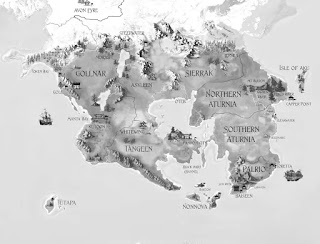


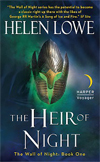
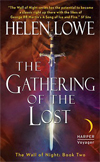
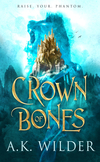
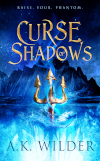

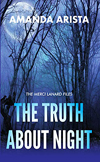

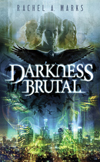
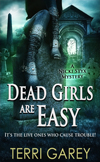
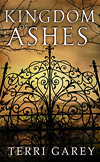
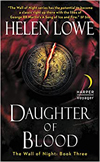
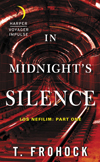

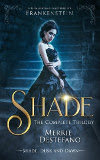

No comments:
Post a Comment